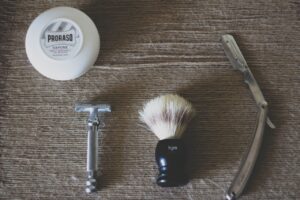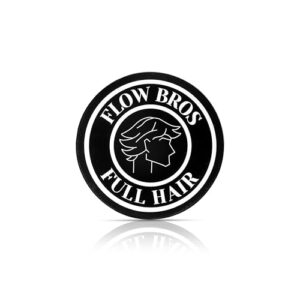Start Smart: Why Hair Type Matters More Than Style
Cutting hair type, not just a photo, drives great results. Diagnose texture, density, and porosity before you cut. This guide shows clear, practical steps for STRAIGHT, WAVY, CURLY, and COILY hair so you shape movement, volume, and healthy ends with confidence.
What You’ll Need
Step 1 — Diagnose the Hair: Texture, Density, and Porosity
Think you can eyeball it? Three quick tests will change your entire cut — learn the secrets stylists use.Identify the hair type first: straight, wavy, curly, or coily. Confirm density (thin, medium, thick) and test porosity (low, normal, high) before you touch scissors.
Test using simple at-home checks:
Adjust cutting approach based on diagnosis:
Record observations and client goals (length, volume, manageability) in notes. Ask about chemical history and daily routine. Refer to a specialist when you find chemical damage, scalp issues, extreme shrinkage in very textured hair, or when the client has had complex relaxer/bleach services — these require professional assessment.
Step 2 — Cutting Straight and Wavy Hair: Lines, Layers, and Movement
Want salon-smooth lines or beachy waves? These clean, predictable techniques give reliable results every time.Decide whether to cut wet or dry: cut straight hair wet for razor-sharp lines; cut wavy hair slightly damp or dry to see natural fall (e.g., dry-cut a beachy lob so waves don’t “spring up” unexpectedly).
Create a solid baseline (one-length blunt): section horizontally, comb to natural fall, hold with consistent light tension, and cut straight across. Use small sections for precision. Example: a blunt bob at jawline—cut with hair wet, check balance dry.
Add long layers for movement: section diagonally or in a horseshoe, elevate 10–30° depending on desired movement (wavier hair = higher elevation). Pull sections to natural fall and cut a little longer than you think; waves shorten the look.
Point-cut for soft edges: angle scissors vertically and make small snips into ends to remove hardness without losing weight; use sparingly on straight hair to avoid frizz.
Section for even results: partition into center, two side quadrants and nape; work from nape up. Maintain consistent light tension on straight hair; relax tension slightly for waves.
Use tools wisely:
Troubleshoot:
Finish with a focused blow-dry: use a nozzle, medium heat, and a round brush for volume; finish with a cool shot. Apply a light smoothing serum or silicone-free oil for shine, or a salt spray/mousse for textured waves and a light-hold spray for lasting shape.
Step 3 — Cutting Curly Hair: Respect the Coil and Cut for the Curl
Cutting curls when dry? Yes — because guesses cost inches. Want springy, defined curls, not frizz? Here’s the method.Respect the curl: understand that curls behave very differently wet vs dry and often reveal their true shape when dry.
Hydrate first: spray with water, apply a lightweight leave-in or curl cream, and detangle gently to let clumps form naturally.
Section into natural clumps: identify the curl clumps and clip them; work curl-by-curl from the front to the back so each coil reads the same.
Use a curl clamp or twist method: clamp each clump or wrap a curl around your finger and cut at the point the curl naturally sits—example: a client named Maya kept losing curl definition until we cut each ringlet where it fell, resulting in uniform coils.
Adopt the DevaCut-style approach: cut each curl individually while dry or nearly dry to preserve pattern and length perception.
Maintain pattern and avoid triangles: remove length within clumps rather than across the head; avoid aggressive face-framing layers that create a triangular silhouette.
Remove bulk carefully: use slide-cutting and minimal tension to thin dense areas without chopping curls; point-cut ends vertically into the curl to preserve spring.
Account for shrinkage: expect 20–50% shrinkage—measure and confirm by pinching a curl to the intended finished length.
Transition cuts slowly: shorten a few inches at a time and re-evaluate curl pattern between cuts.
Style for finish: plop for defined set, diffuse on low heat to lift, and layer gel under or over cream (gel for strong hold; lightweight cream or oil for softness).
Step 4 — Cutting Coily and Highly Textured Hair: Shape, Shrinkage, and Scissor Control
Bold claim: cutting coily hair wrong destroys shape — do this instead to preserve pattern and volume.Cut dry to judge true length and pattern. Work in small sections that follow each growth direction. Use minimal tension—let curls sit naturally between fingers so you don’t overstretch the coil. For example, on a 4C client, I trimmed curl-by-curl to preserve spring and avoid uneven gaps.
Shape with intent. Create a round afro by cutting consistent lengths around the perimeter; make tapered sides with clipper-over-comb, blending short sides into a longer top; build a layered crown by vertically elevating small subsections and point-cutting to add lift without blunt heaviness.
Measure and compensate for shrinkage. Expect 30–70% shrinkage depending on porosity and coil tightness. Pinch the curl to its finished fall, stretch to confirm the desired length, then cut where the curl naturally sits rather than where it is stretched.
Thin safely to remove bulk. Avoid razors and aggressive thinning that cause frizz. Use short, targeted slide-cuts or limited texturizing shears on dry hair. Prefer blunt shears for clean lines and texturizing shears sparingly to take weight without chopping.
Use clipper-over-comb for tapered looks; keep comb parallel to head and take small passes. Trim curl-by-curl for definition—twist or wrap single coils and snip at the curl’s resting point.
Moisturize and maintain. Recommend LOC/LCO routines, weekly deep-conditioning, protective styles (twists, braids, buns), and trims every 8–12 weeks to remove split ends.
Refer to a specialist if you see chemical damage, persistent extreme breakage, or severe scalp inflammation/infection.
Wrap-Up: Cut with Knowledge, Not Guesswork
Diagnose first, respect texture, and cut intentionally to make results predictable; practice with small test cuts, keep learning, and experiment confidently. Try these steps, share your before-and-after photos, and join the community of thoughtful cutters who craft consistent, beautiful styles.










This guide actually made me stop and think about hair porosity — never realized that was a thing when cutting. 🙈
I tried the curl-first approach on my sister’s wavy hair and it helped with frizz. A couple of questions:
1) For medium porosity, should I still dampen before cutting or work dry?
2) Any quick tips for keeping layers from looking choppy on second-day hair?
Thanks — great write-up, lots of practical stuff here!
Agree with the admin — slight damp works. Also try a wide-tooth comb vs brush when checking layers on day two, it preserves the natural movement.
I also use a little leave-in conditioner before styling day-two hair. Helps reduce the choppy look without re-cutting.
Great questions, Emma. For medium porosity you can work either way but start slightly damp (not soaking) to see the fall, then refine dry. For second-day hair, point-cut into the ends and blend with slide-cutting or soft razoring to avoid harsh lines.
Tip: if it looks choppy, sometimes the problem is weight distribution. Add soft face-framing layers rather than chopping the mid-lengths.
Longer note because I actually tried the curl-only dry shaping method from step 3 and here’s the breakdown of my experience:
1) I sectioned into 6 clumps, worked dry, and cut small amounts per clump.
2) Let hair rest and re-evaluate — the final shape looked cohesive.
3) Mistake: I initially stretched curls too much and had to re-balance length.
Overall: this method works but patience is required. Also — do NOT rush the check after wash. The pattern changes!
Thanks for the detailed walkthrough, Isabella — real-world reports like yours are super helpful for other readers. Patience is indeed the secret ingredient.
Nice write-up. The ‘cut small, re-evaluate’ rule saved me on many occasions.
Totally. And if you over-stretch initially, go back and cut less on the next pass, not more.
My barber always says ‘diagnose before you cut’ and this article backs that up with actual reasons. I wish more people would stop thinking layers = more hair loss. The guide explained density vs thickness clearly.
Funny how the right layer placement can actually make hair look fuller, not thinner.
Thanks, Olivia. Layer myths are everywhere — glad the distinction helped.
Same here. I used to fear layers but once I understood density vs thickness, it’s a game changer.
Loved the breakdown of porosity vs density. Helpful for deciding whether to thin hair or not. Also liked the respectful tone for curly and coily hair — not that pseudo-authoritative ‘one-size’ nonsense.
Appreciate that, Sophia. Respect for curl pattern is the goal — glad it came across.
Totally. The ‘respect the coil’ line resonated with me — less aggressive cutting = better coils.
This is a solid resource for stylists transitioning into textured hair work. One practical thing I use: mark client cards with ‘ideal tension’ and ‘preferred dry/wet cut’ so assistants know what prep to do.
Also include product preferences on that card. Saves time and avoids surprises with styling.
Smart workflow tip, Lucas. Client notes are invaluable — thanks for sharing.
Love that — small systems like that make a big difference in consistency.
Short and sweet — loved the ‘Cut with Knowledge, Not Guesswork’ line. Felt practical and not too preachy. My only nitpick: a couple more photos for coily hair would help.
Photos would be clutch. The text is solid but visuals seal the deal for tricky textures.
Yes please photos! Videos even better 🙏
Thanks Liam — good note. We’re planning a photo walkthrough for the coily section in the next update.
Quick practical Q: for someone cutting their own straight-but-thin hair, would you recommend slide cutting at all? I’m nervous about removing too much weight.
Agree — light point cuts and small sections. Also avoid razors unless you really know the technique.
For thin hair, slide cutting can be used conservatively at the ends to soften, but avoid heavy slicing through bulk. Point cutting and micro-layering are safer.
The section on shrinkage for coily hair hit different. Took me forever to realize my ‘short bob’ looked different once dry. 😂
Also, lol at the tiny tip about scissor control — made me imagine someone manically snipping at 100mph. Slow down, folks!
Preach. I now leave about 15-20% extra length when shaping tight coils to account for shrinkage.
Also consider humidity — it changes your shrinkage assumptions on certain days.
Ha — yes! Shrinkage surprises are real. Always check shape at natural curl state and dry — it’s a two-step reveal.
Manically snipping is the worst. Technique over speed every time.
Appreciated the section on ‘lines, layers, and movement’ for wavy hair. It clarified why some cuts look flat even when they have layers. One question: any recommended section sizes for 2A vs 2C waves?
Trial and error works — start wide and refine. Keep notes on what section sizes gave the best result for each client.
Good Q. For 2A (looser waves) use wider sections to preserve flow; for 2C use slightly smaller sections to manage definition and avoid bulk. Exact size depends on density.
Okay, big fan of the diagnostic approach. But here’s a longer-ish take:
– Step 1 being so thorough is honestly the difference between a ‘cute DIY trim’ and a hair emergency.
– The cutting straight/wavy hair section had great line diagrams in my head (lol) but would be nicer with a few in-guide examples.
– For coily hair: I appreciate the scissor-control emphasis — many people underestimate how much technique matters.
Also, PSA: watch your tension on coily sections. Too much stretch = false length, and then shrinkage complaaaaaints. 😅
Mia’s suggestion is great — pinning/clumping for preview is exactly a recommended step before finalizing shape.
Marcus — 100% about the tension. Once I learned to cut curl in its natural coil, my results improved overnight.
Also remember: stretch tests before committing to a shape. Pin curl or clump to preview the final look!
Spot on about tension. We added that note precisely because of the false-length issue — glad it landed. We’ll add visual examples in the next revision.
Good call on scissor control — it’s underrated. Even simple scissors work if your technique is solid.
Not gonna lie, I skimmed to the coily part first 😂 but ended up bookmarking the whole guide. Love the tone — actually friendly, not condescending. Also, small nit: a glossary for terms like ‘porosity’ and ‘density’ could help beginners.
Glossary would be clutch for DIYers who are new to texture terminology.
Yup. Even basic diagrams for porosity tests (float vs strand) would help folks.
I learned porosity the hard way — having it spelled out would have saved time and one haircut disaster lol.
We’ll add a glossary in the next edit — great suggestion. Glad the tone came through!
Short: useful, respectful, and practical. One tiny gripe — some screenshots had small text that was hard to read on mobile. Otherwise, solid job. 👍
Good catch. Mobile readability is everything these days.
Thanks Harper — we’ll optimize images and text size for mobile in the update.